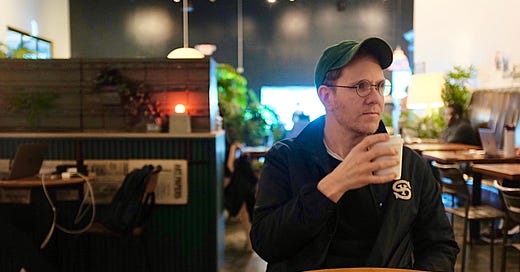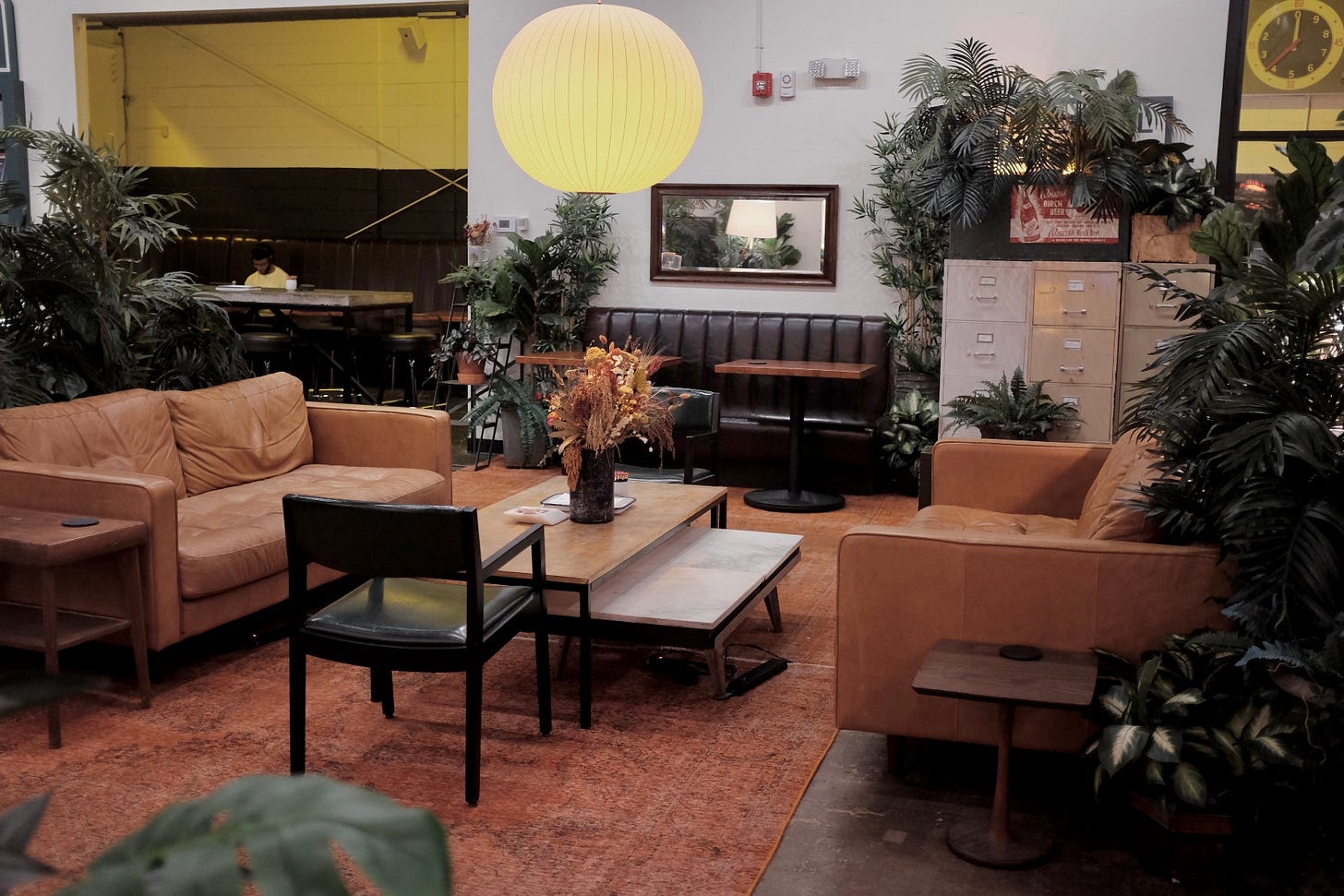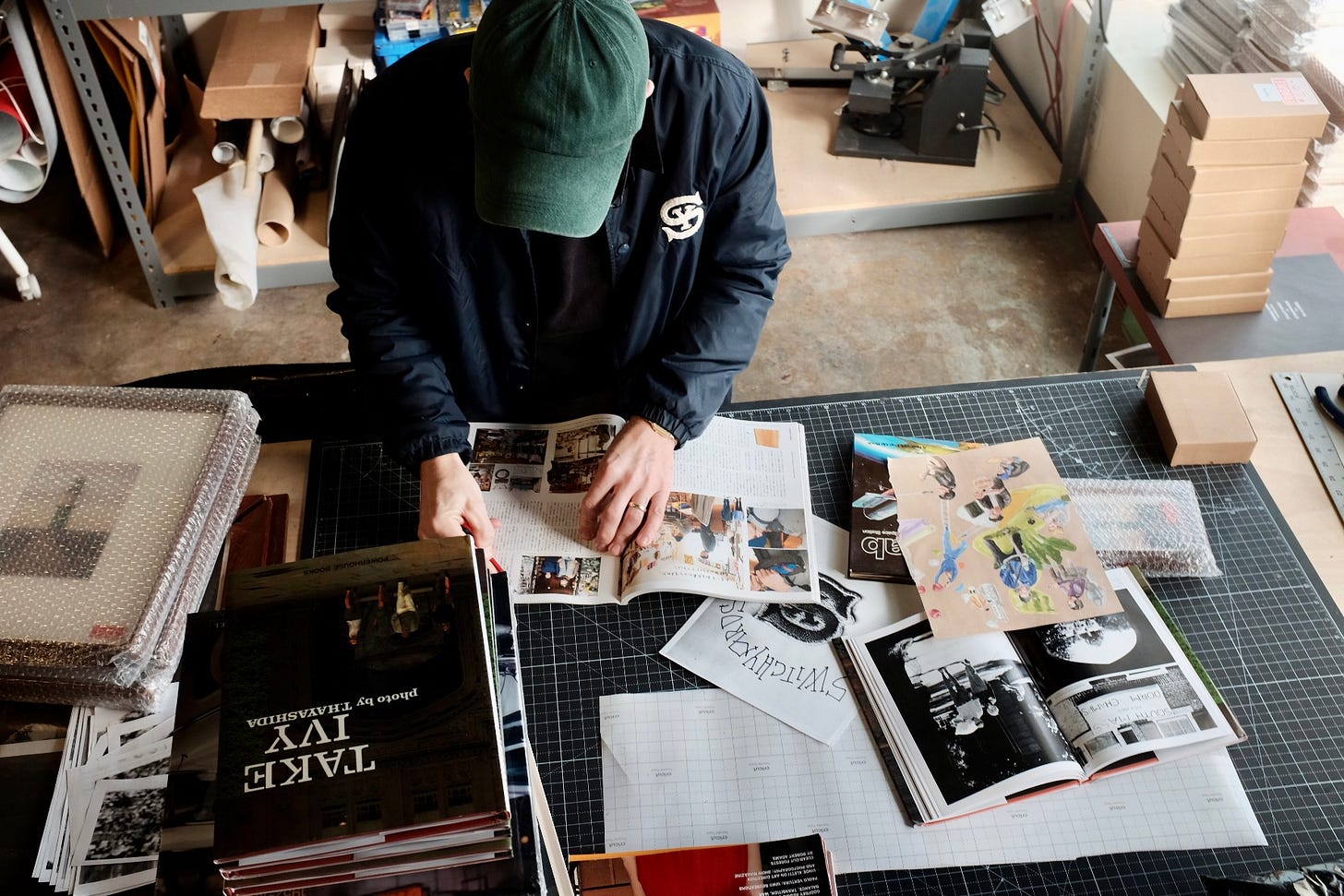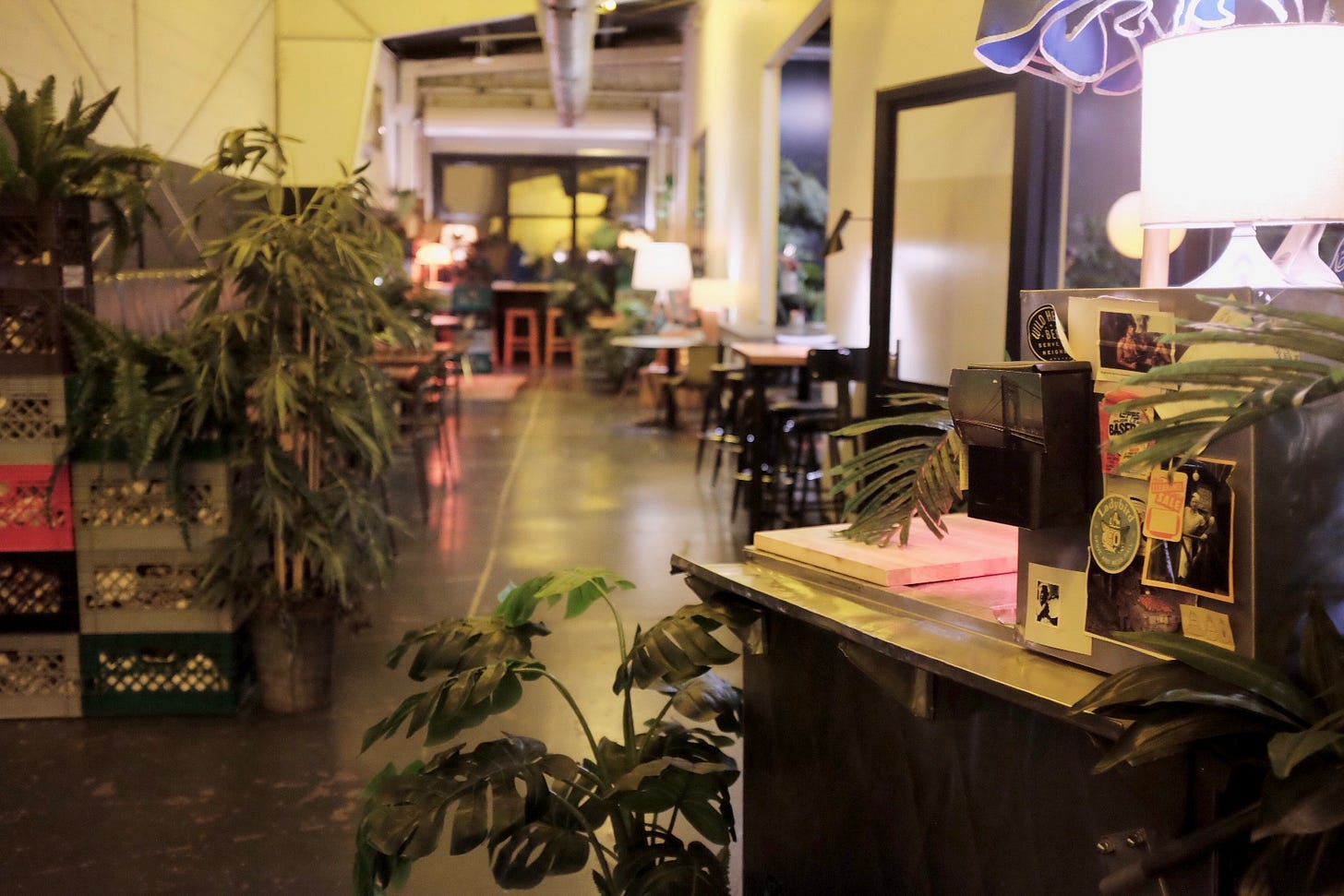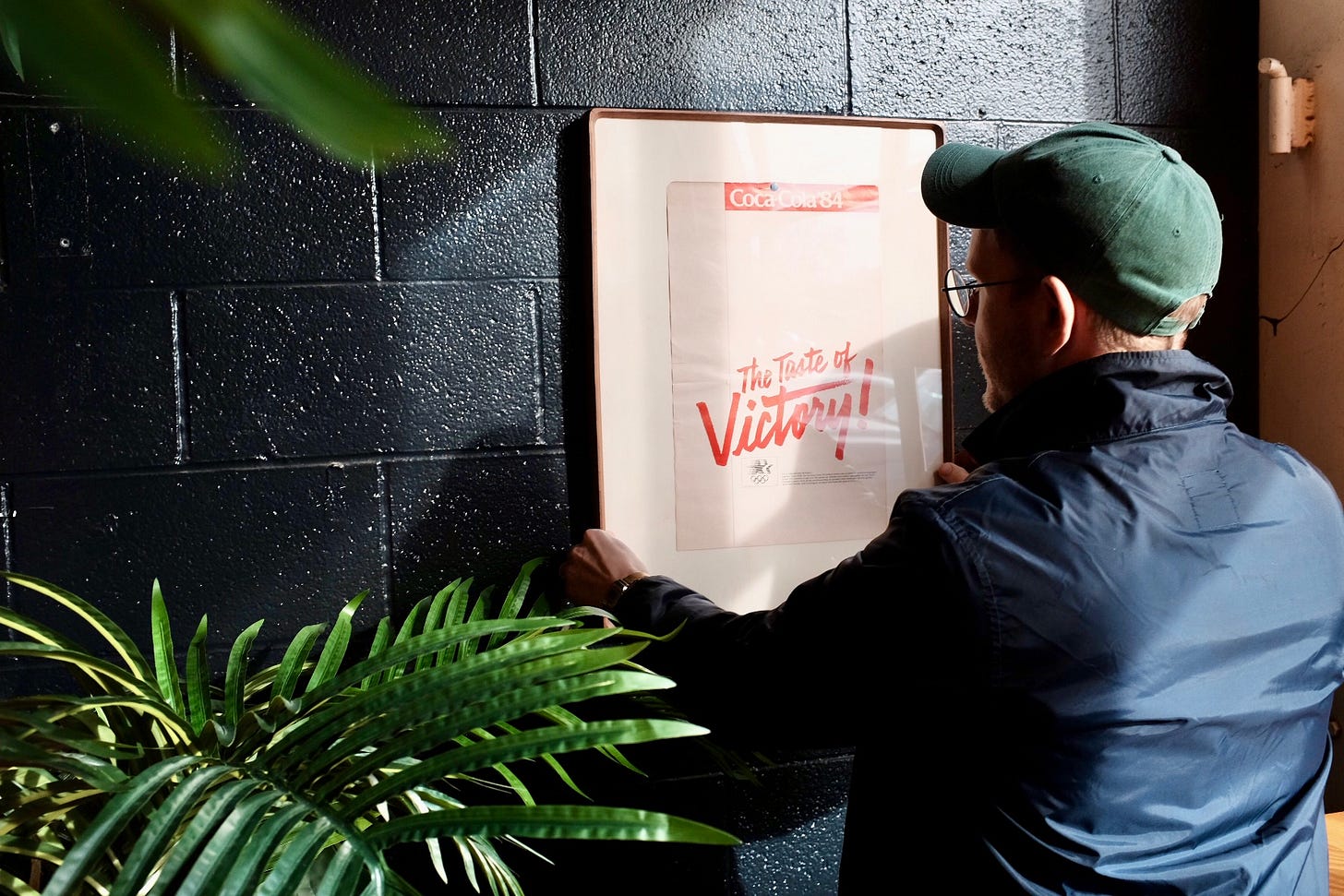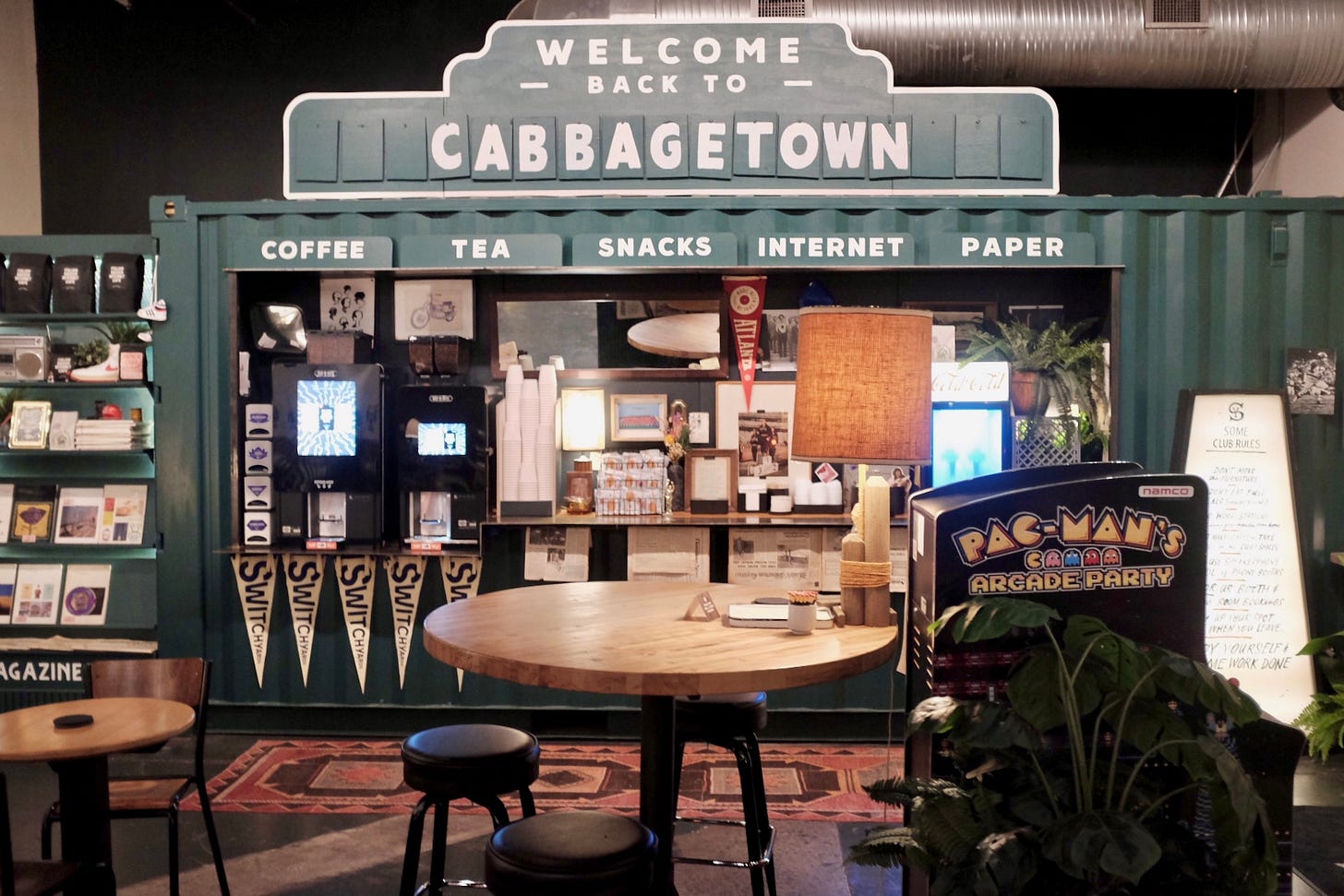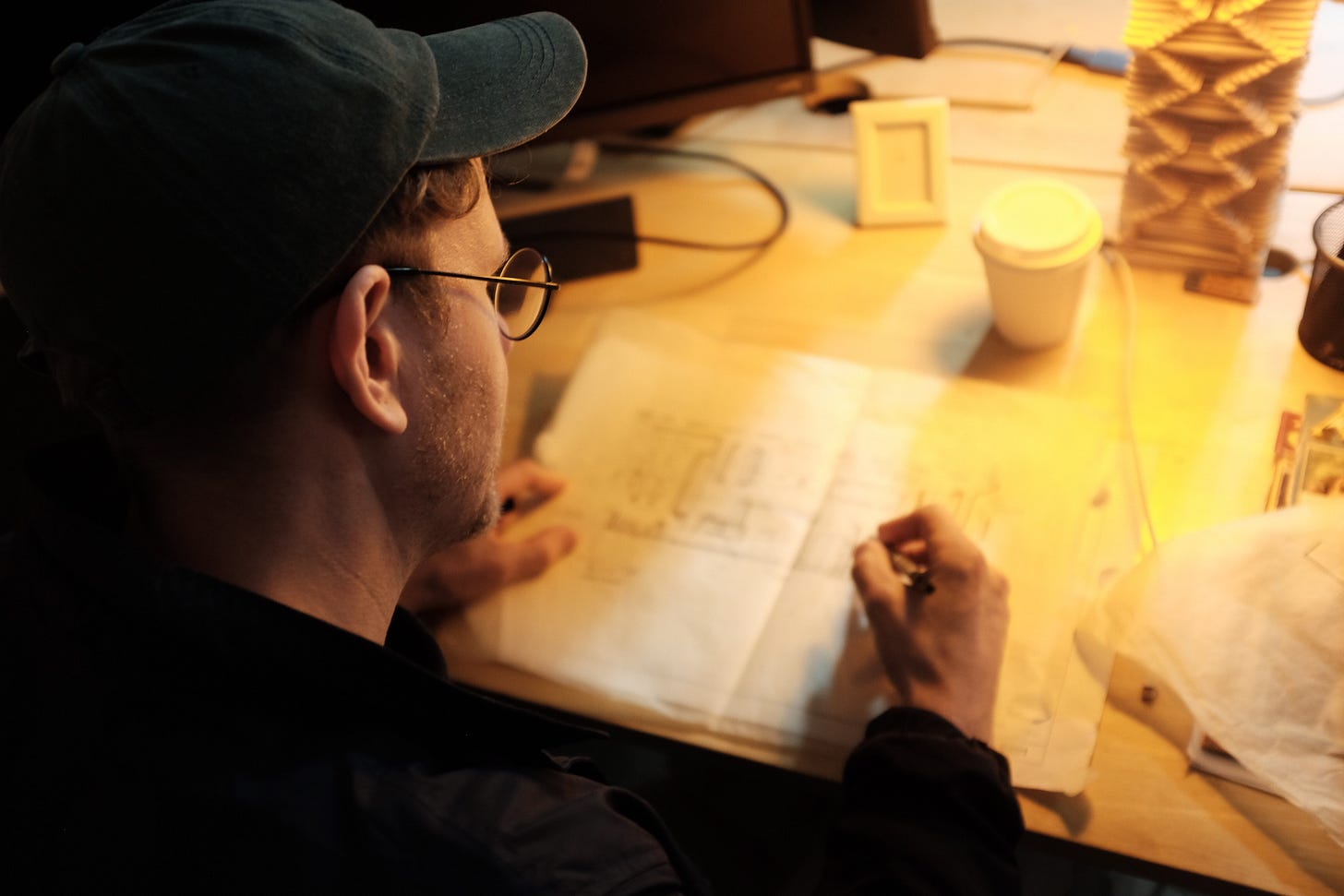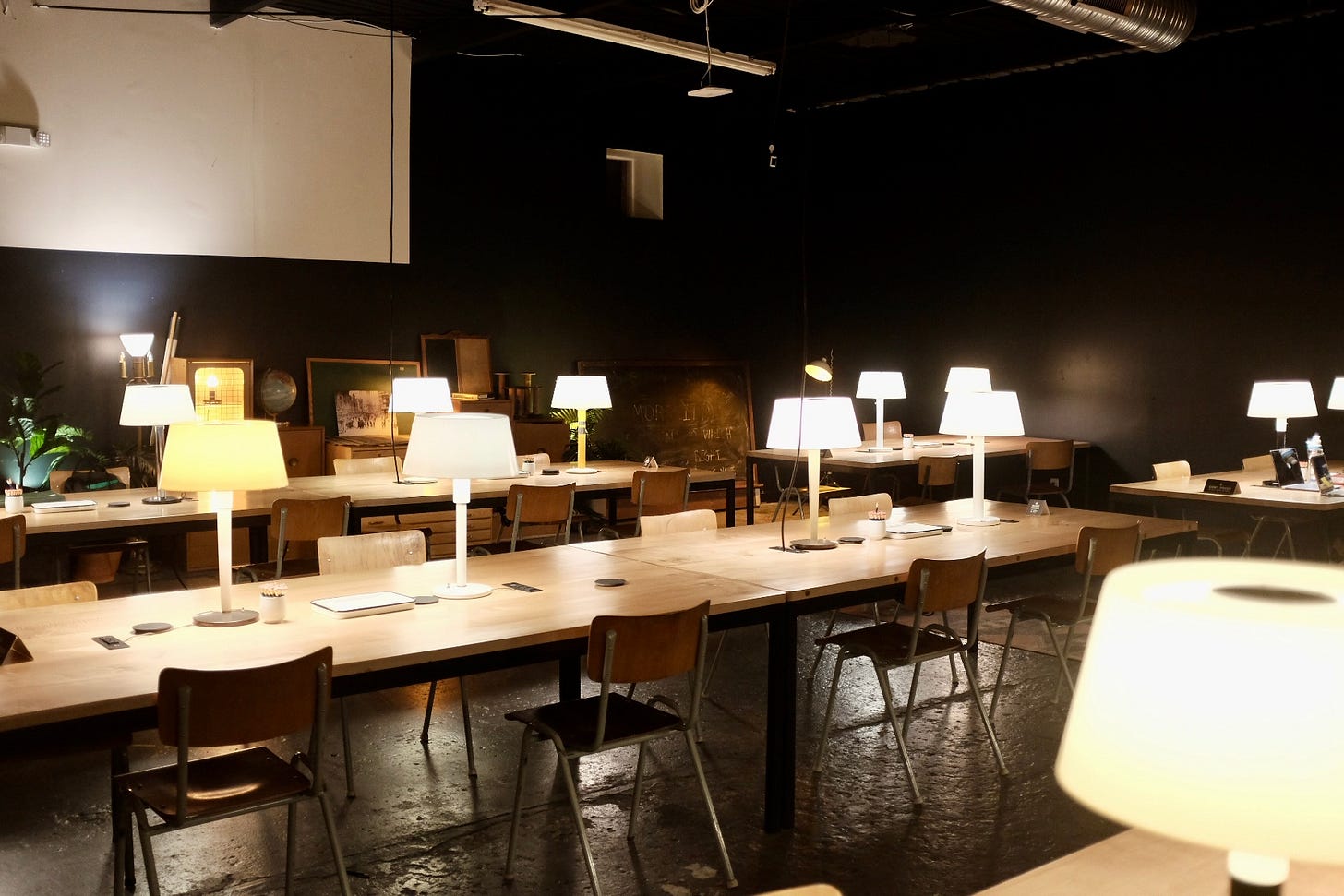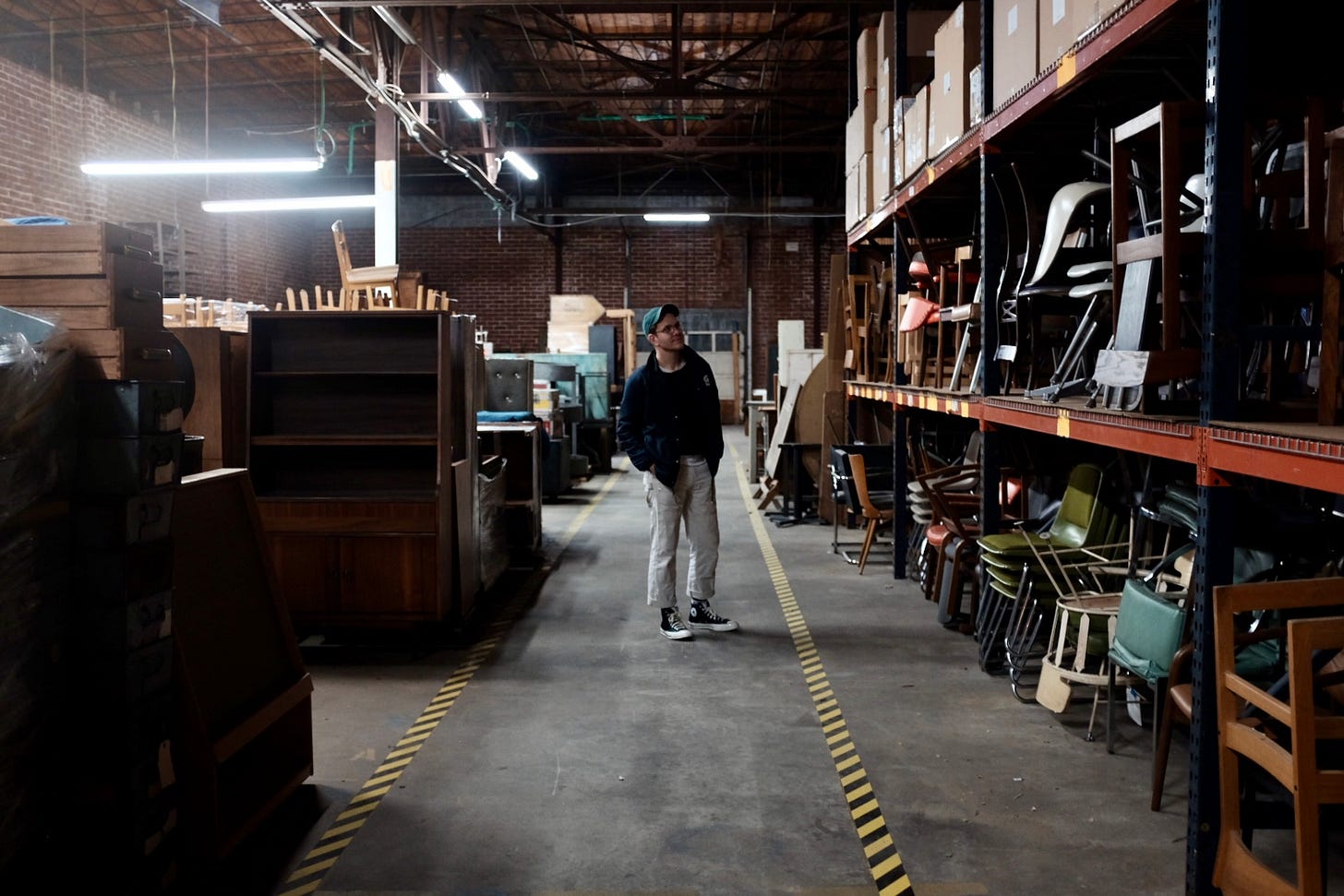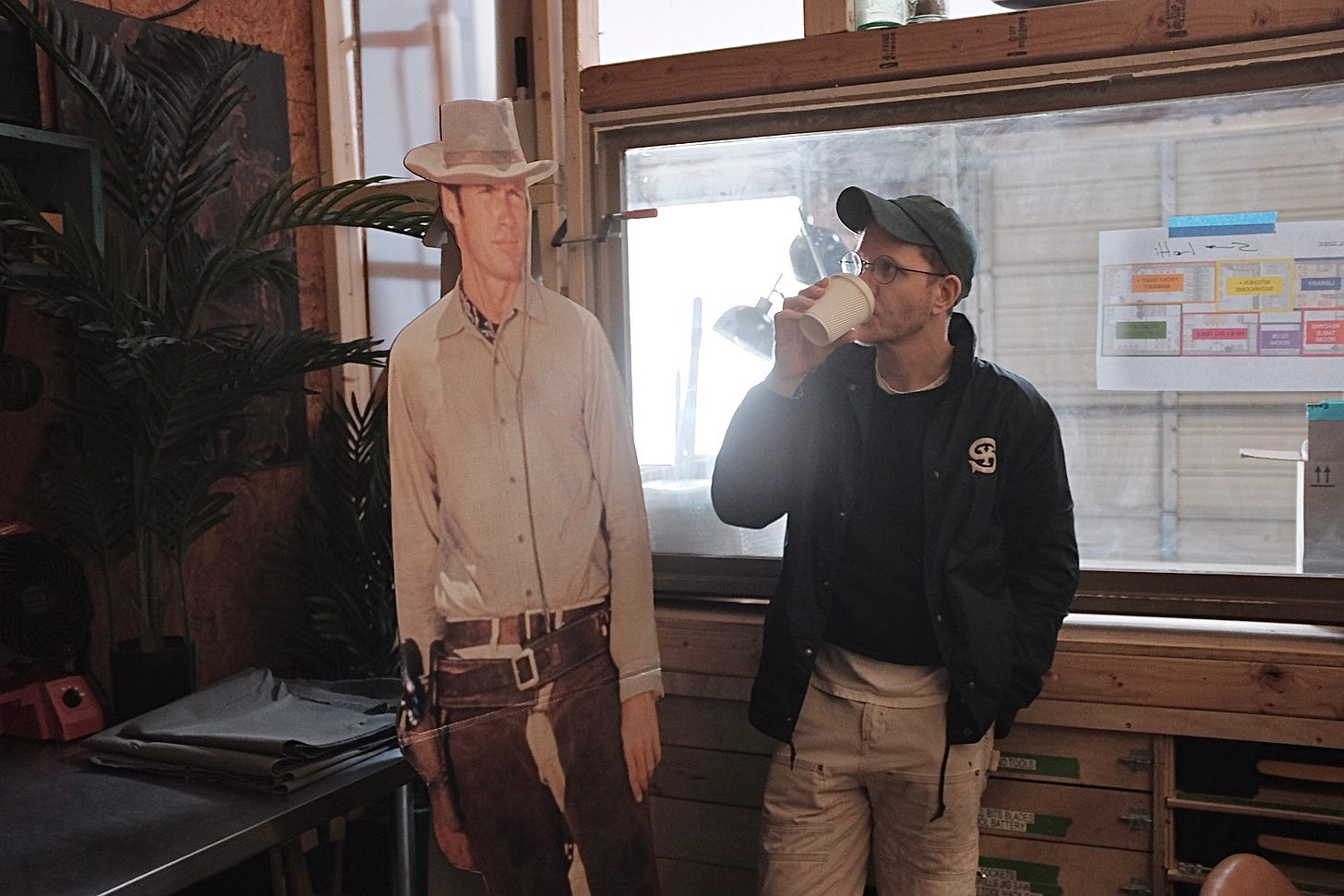Who are you?
My name is Jared Erickson, and I am the head of design for Switchyards. I classify myself as a multidisciplinary designer because I do anything from logos to the space.
How did you get interested in design?
It probably started at a young age with comic books, with just wanting to be a comic book artist and getting into art and everything like that. Honestly, even nowadays, I still doodle environments and design them almost as if it were a comic book page. I think that early interest made me pay attention to rooms and spaces and what would feel cozy. I still translate that to now, you know, environmentally, but it started at first in the web and graphic side.
How would you describe your style?
The first thing that comes to mind is messy. But it's weird, like I have a Swedish background. So I've also always been inspired by minimalism, but then there's this punk-rock hardcore side of me, where I used to play in a band, and there's this collision of this minimal clean aesthetic mixed with this messy grungy use-what-you-have kind of style. So I love bringing together different highs and lows and mixing the best of different decades in either spaces or even graphic design.
What’s the most important aspect in design to capture?
I want to say feeling. I think it's really important to capture the feeling of what the space is trying to convey. Like, what's the form? What's the function? Are you trying to convey a place where you want to sit for a while and have a cup of coffee? Or are you trying to convey a space where you need to lock in and do some writing? It's really about what feeling you are trying to create.
What’s a foundational piece that you build around?
I like to find a unique item to anchor, whatever it may be, the room around. So for a living room, a couch or a coffee table or something distinctive. Then, you can surround it with other items that are off a shelf. But this one unique item ought to make people wonder where that came from and really pulls the whole area together.
Do you have a favorite piece?
I guess there are so many different seating arrangements or couches that I have just died over. But when it comes down to it, in Nashville, there's a piece of art that is a watercolor of some runners. It's a beautiful piece that should be framed, but I just pinned it up on a kitchen run, along with some other ephemera. For some reason, that piece just always stands out, and it feels out of place because it feels like it should be more important, but there it is, just hanging there with a tack in it.
How do you approach a space when designing it?
We usually quickly drop into “What's the history of the neighborhood and the space?” That usually kicks off the thought process of what's going into the space. It’s important that we find out the history of it, so we can bring that into it. Then we ask, “What's the flow of the space?” “Where are we setting up the kitchen, a library, or offices?” and “How do we make a unique and enjoyable discovery path for that space?” A lot of times, we'll draw that out on the floor plan before even placing any of the furniture. This helps us determine where we want the person's journey to go. Then we fill it in with the furniture and everything else. After floor planning, we turn to sourcing. We have a 20,000-square-foot warehouse up the road from our Cabbagetown location, where we’re always purchasing and collecting. So, based on the history of the space and the kind of look we're going for, I'll start pulling in the items that I feel will fit into that space.
Design hacks?
Probably set a deadline and do what you can with what you have. I mean the Cabbagetown space, when I built it out, took a year to build out, and now I'm doing spaces that are a gray box. Which basically means empty to finished in two weeks. A lot of that has come out of the restraint of time and budget. I see people spend millions of dollars on spaces, and it doesn't mean they're better. It's not about the money or anything; it's about the restraint and the time that you put into it, and more time doesn't always mean better, so I'd say a hack is just using what you have given yourself.
Do you collect anything?
I collect spaces now, I think. It's funny because some buddies and I were looking through each other’s Pinterest boards. They had theirs all nicely curated with, say, fashion, design, and art. Yet, mine's just a mess of everything that I find interesting. So I think for me, collecting is just anything. It's all different mediums, you know, it's art, it's photography, it's little scraps of receipt paper. I like anything that has intentional design behind it. I find myself hoarding, collecting, and pinning it on my office wall.
What’s a small detail that you love?
When it comes to a lot of our spaces, we try to go around and sit in all the different seats, and look at the space from that seat, and I love putting a piece of art, or pinning a piece of ephemera, or putting a plant that you may only notice when you're in that particular seat. So, maybe when you're walking through, you don't notice it, but you sit down in a certain seat with a specific perspective of the space, and you're gonna notice a piece of art that your eyes are set on from that point of view. I think those are just fun moments that a lot of companies or designers will just kind of overlook or not think about each individual experience. That's probably my favorite type of moment.
You can follow along with Jared’s work at lessmade.com
